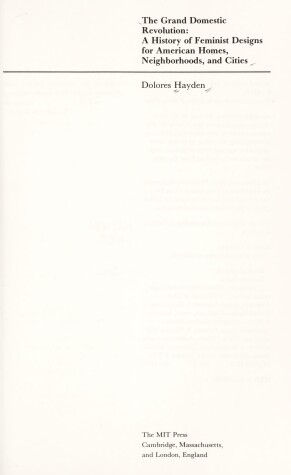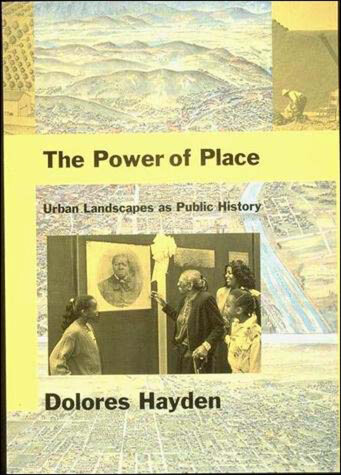The MIT Press
3 total works
"This is a book that is full of things I have never seen before, and full of new things to say about things I thought I knew well. It is a book about houses and about culture and about how each affects the other, and it must stand as one of the major works on the history of modern housing." - Paul Goldberger, The New York Times Book Review
Long before Betty Friedan wrote about "the problem that had no name" in The Feminine Mystique, a group of American feminists whose leaders included Melusina Fay Peirce, Mary Livermore, and Charlotte Perkins Gilman campaigned against women's isolation in the home and confinement to domestic life as the basic cause of their unequal position in society.The Grand Domestic Revolution reveals the innovative plans and visionary strategies of these persistent women, who developed the theory and practice of what Hayden calls "material feminism" in pursuit of economic independence and social equality. The material feminists' ambitious goals of socialized housework and child care meant revolutionizing the American home and creating community services. They raised fundamental questions about the relationship of men, women, and children in industrial society. Hayden analyzes the utopian and pragmatic sources of the feminists' programs for domestic reorganization and the conflicts over class, race, and gender they encountered. This history of a little-known intellectual tradition challenging patriarchal notions of "women's place" and "women's work" offers a new interpretation of the history of American feminism and a new interpretation of the history of American housing and urban design. Hayden shows how the material feminists' political ideology led them to design physical space to create housewives' cooperatives, kitchenless houses, day-care centers, public kitchens, and community dining halls. In their insistence that women be paid for domestic labor, the material feminists won the support of many suffragists and of novelists such as Edward Bellamy and William Dean Howells, who helped popularize their cause. Ebenezer Howard, Rudolph Schindler, and Lewis Mumford were among the many progressive architects and planners who promoted the reorganization of housing and neighborhoods around the needs of employed women. In reevaluating these early feminist plans for the environmental and economic transformation of American society and in recording the vigorous and many-sided arguments that evolved around the issues they raised, Hayden brings to light basic economic and spacial contradictions which outdated forms of housing and inadequate community services still create for American women and for their families.
In the first part of The Power of Place, Hayden outlines the elements of a social history of urban space to connect people's lives and livelihoods to the urban landscape as it changes over time. She then explores how communities and professionals can tap the power of historic urban landscapes to nurture public memory.
The second part documents a decade of research and practice by The Power of Place, a nonprofit organization Hayden founded in downtown Los Angeles. Through public meetings, walking tours, artists's books, and permanent public sculpture, as well as architectural preservation, teams of historians, designers, planners, and artists worked together to understand, preserve, and commemorate urban landscape history as African American, Latina, and Asian American families have experienced it.
One project celebrates the urban homestead of Biddy Mason, an African American ex-slave and midwife active betwen 1856 and 1891. Another reinterprets the Embassy Theater where Rose Pesotta, Luisa Moreno, and Josefina Fierro de Bright organized Latina dressmakers and cannery workers in the 1930s and 1940s. A third chapter tells the story of a historic district where Japanese American family businesses flourished from the 1890s to the 1940s. Each project deals with bitter memories—slavery, repatriation, internment—but shows how citizens survived and persevered to build an urban life for themselves, their families, and their communities.
Drawing on many similar efforts around the United States, from New York to Charleston, Seattle to Cincinnati, Hayden finds a broad new movement across urban preservation, public history, and public art to accept American diversity at the heart of the vernacular urban landscape. She provides dozens of models for creative urban history projects in cities and towns across the country.


